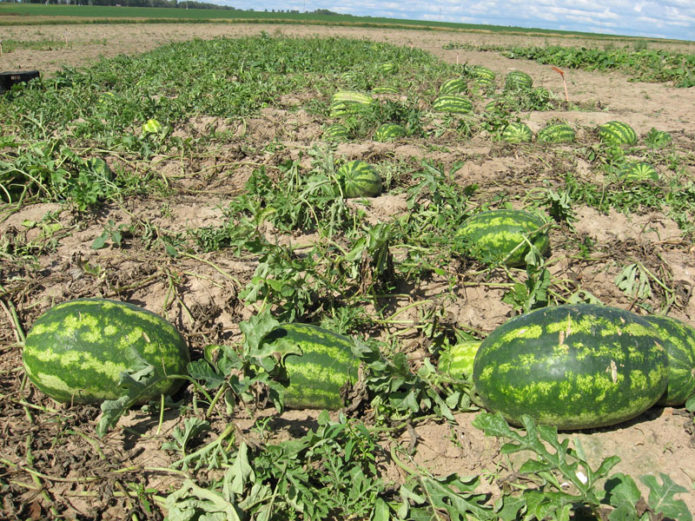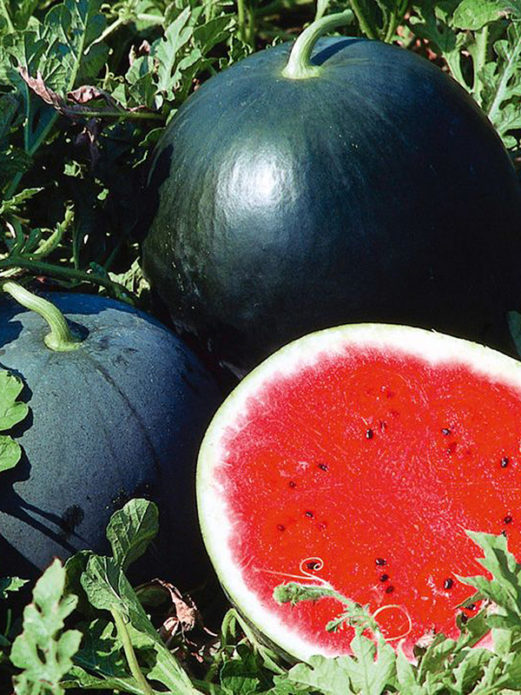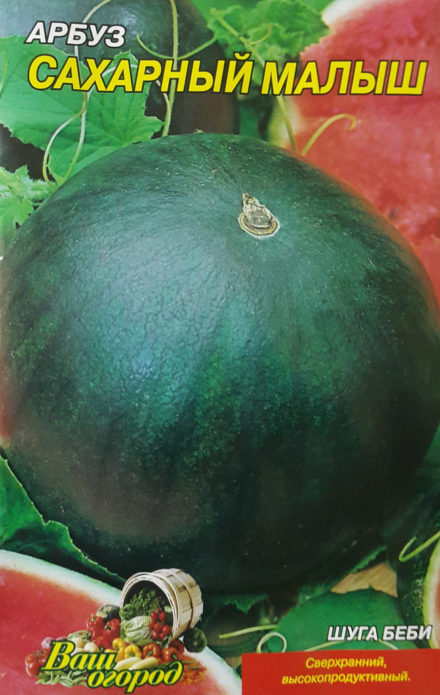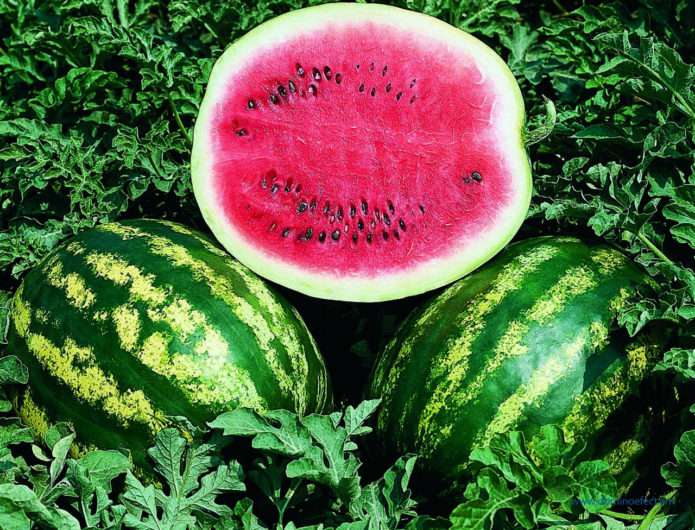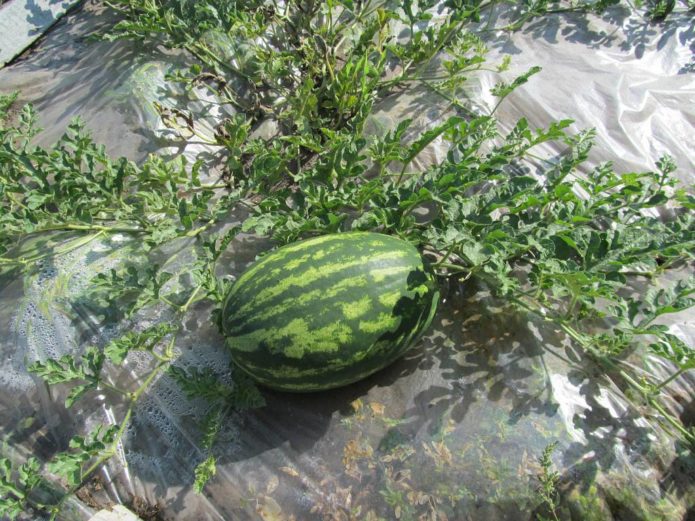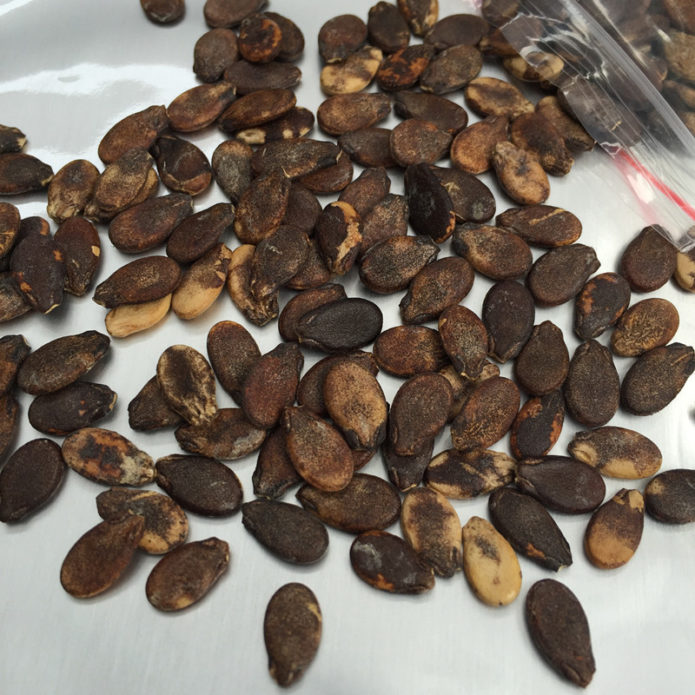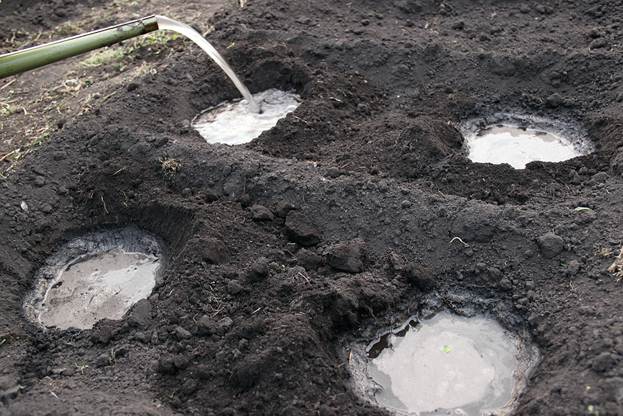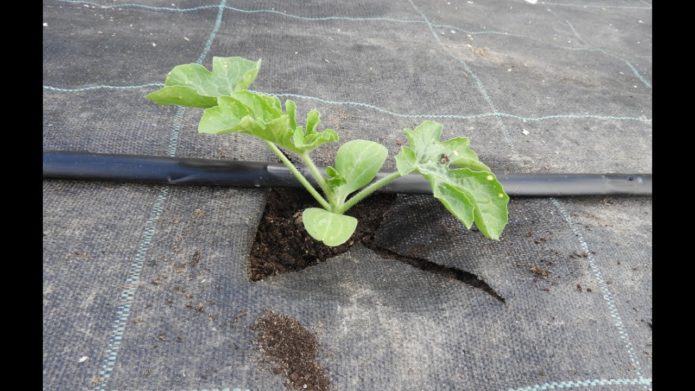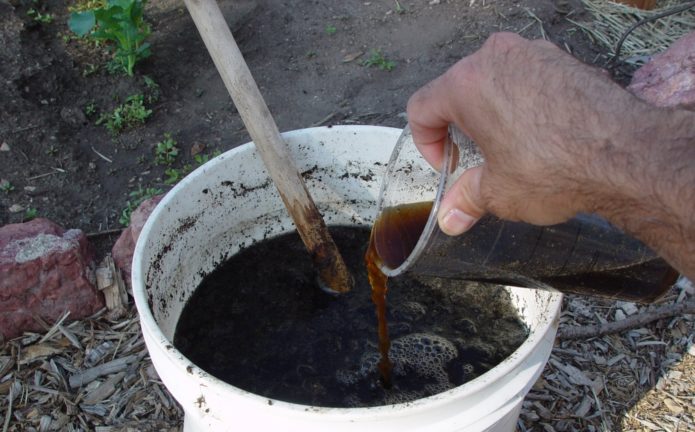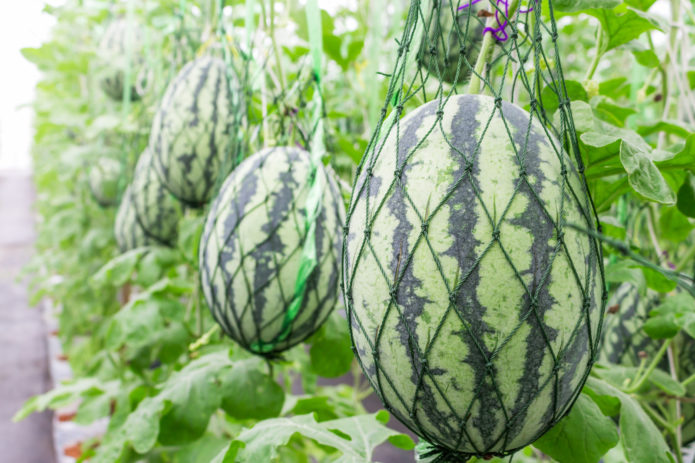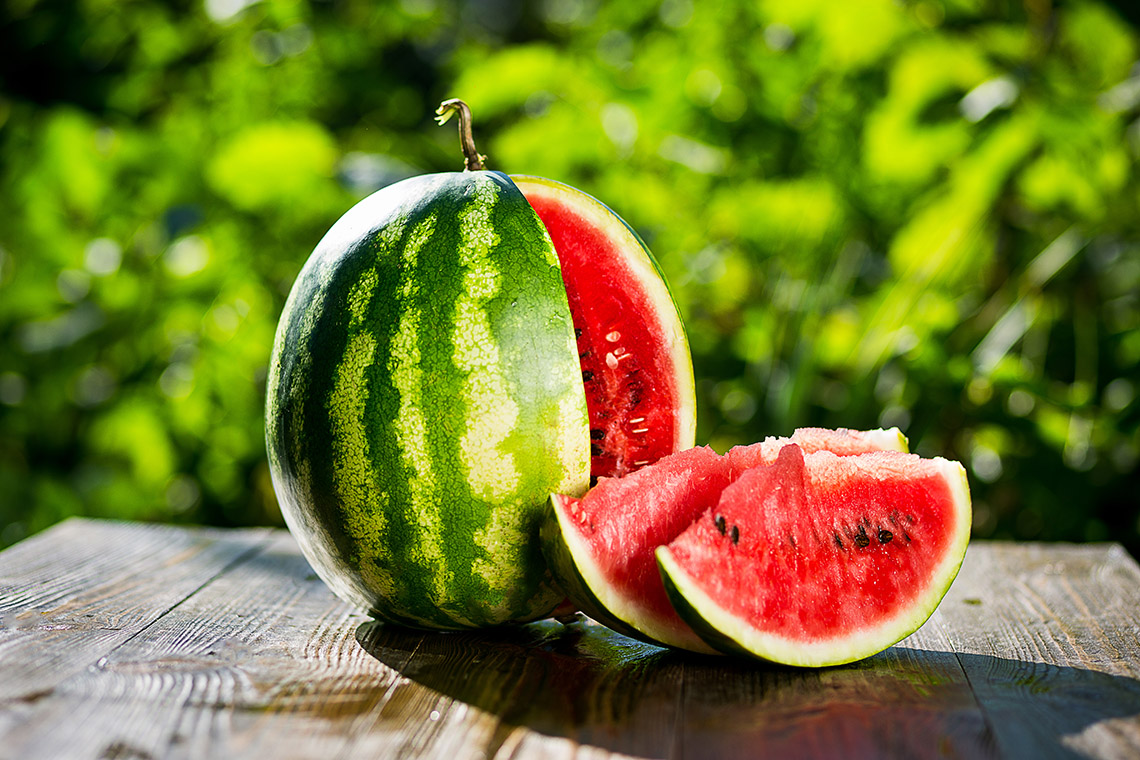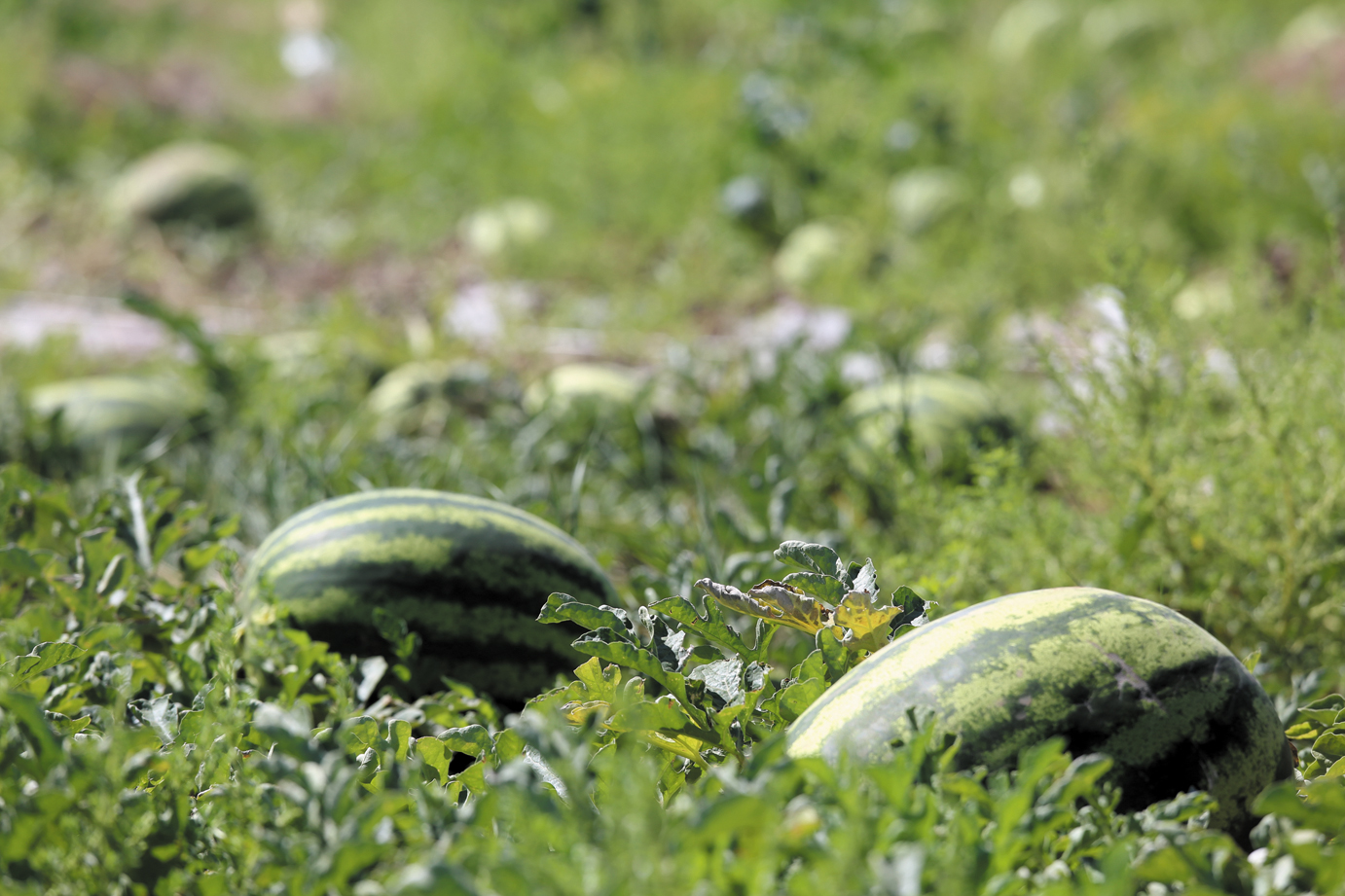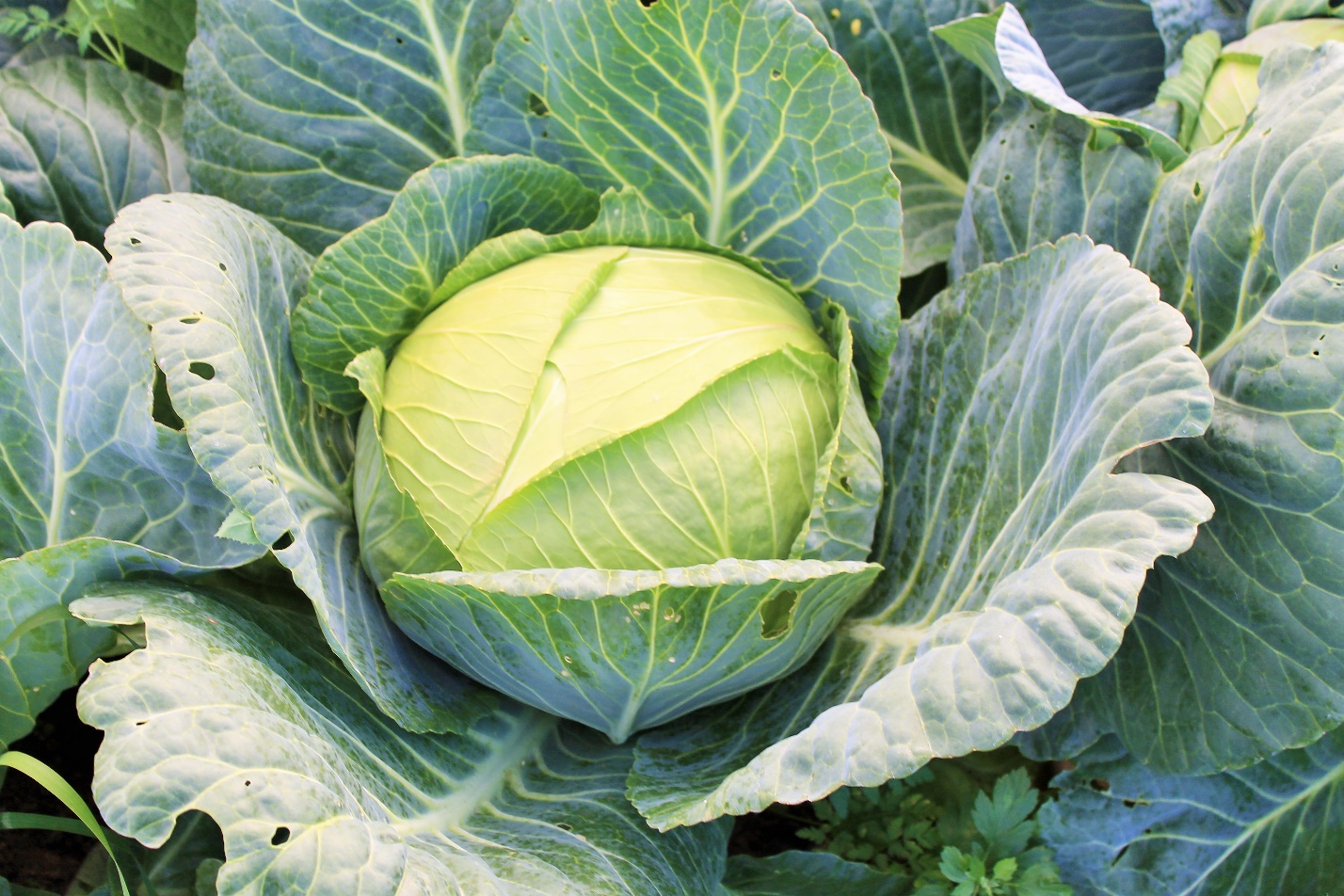Watermelon in flower beds near Moscow: fantasy or reality? It turns out that there is nothing unusual in this phenomenon for a long time. Of course, it will not be possible to grow striped berries as tasty as in the south, but enthusiasts are trying, and many are doing quite well.
Content
Is it possible to grow a watermelon in the suburbs
The climate of the Moscow region is not very suitable for growing heat-loving southern crops - melons and watermelons, but with a strong desire and investment of labor, get good results. You can grow a harvest of quite tasty fruits in the beds near Moscow. To do this, you should choose a zoned variety, prepare a bed properly, plant seeds for seedlings in time (it is problematic to grow watermelons in a garden in the Moscow region) and properly care for the plants.
Watermelons need space, warmth and bright sun. Even in relative partial shade, they grow very poorly, so it is useless to plant them near trees. There is enough heat in the Moscow region for early ripening watermelons, only in some unlucky years can you be left without a crop. But there may even be too much water: during the ripening of the fruits, watermelons are not watered at all, and the rainy weather near Moscow can interfere with the receipt of sweet berries. After all, a watermelon originated from Africa, is used to looking for moisture bit by bit, spreading its roots far and deep, and in swampy ground it can simply rot. Therefore, in the Moscow region, it is necessary to plant watermelons on the hills.
Oddly enough, a watermelon normally tolerates short cold snaps, unless, of course, the temperature approaches 0 aboutC. True, for young plants, temperatures below 12 ° C can be fatal. Therefore, being able to temporarily cover plantings in the Moscow region is a prerequisite. However, they plant watermelons in greenhouses, but, firstly, it is not always economically feasible, and, secondly, the sweetest berries grow in the sun.
Watermelon varieties for the Moscow region
Like all plants, watermelons come in different ripening periods. It is useless to plant late-ripening plants in the Moscow region, mid-ripening ones are usually grown in greenhouses, and the earliest are trying to plant in unprotected soil.
There are more than a hundred varieties of watermelon. However, the State Register of the Russian Federation recommends only a few units directly for the Moscow Region. At the same time, about fifty varieties are allowed to grow in all climatic regions. Here, of course, the issue is controversial: after all, in the latitudes north of Moscow, the cultivation of watermelons is most often available only in greenhouses, so you need to carefully understand each specific variety... In the Moscow region, amateur gardeners often grow the following varieties:
- Ogonyok is one of the most famous early-ripening varieties with small fruits (about 2 kg), delicate pulp and excellent taste. The bark is dark green, the stripes are almost invisible.
- Suga baby (Sugar baby) - one of the earliest ripening varieties, has a high cold resistance. Fruits weighing no more than 1 kg, striped. The taste is assessed as excellent, the harvest is well transported.
- Trophy F1 ripens in a little more than two months, the fruits are elongated, large, weighing up to 10 kg. The color is light green with wide stripes, the taste is excellent. The variety is distinguished by its high yield and good crop safety.
- Sugar is a variety that is resistant to temperature changes. Ripens at the same time as Trophy. The bark is greenish, the flesh is very sweet.
- Maristo F1 - the berry ripens in a little more than two months, the variety is disease-resistant, high-yielding. Fruits are elongated, striped, weighing up to 6 kg.
- Vector is a very early maturing new variety. Fruit weight - about 3 kg, excellent taste, elongated shape, striped color.
All varieties grown in unprotected ground are also suitable for greenhouses. But they also plant mid-season watermelons, for example, Lezheboku, Ataman, Crimson suite, Joy F1, Gift to the north F1, etc. Thus, the French watermelon Crimson suite quickly became popular among fans. He has fruits of classic shape and color, large, the flesh is especially sweet. The harvest is well kept.
Agricultural technology for growing watermelons in the Moscow region
When growing watermelons in the Moscow region, each step must be carried out responsibly, since any errors are fraught with failure of the event.
Preparing the garden
A place for a watermelon is chosen spacious and sunny. Light neutral sandy loam filled with organic fertilizers is best suited for soil. Sand is added to clay soils. 1 m2 the beds are brought in a bucket of humus, half a liter of ash and about 30 g of superphosphate.
Micronutrient fertilizers containing magnesium are also useful.
The best predecessors are cabbage, garlic, legumes, unacceptable ones are nightshades and melons.
In the Moscow region, many summer residents grow watermelons in the so-called smart beds... When digging them, the amount of organic matter introduced is significantly increased so that the soil warms up sooner. The garden bed is immediately covered with a black film, and before planting the watermelons, small slots are made in which the watermelons are planted. The film is left for the whole summer, and if necessary, the bed is insulated with non-woven materials.
Planting and caring for watermelon seedlings
Most often, gardeners near Moscow grow watermelons through the seedling stage. When calculating the time for sowing, take into account that planting of seedlings should take place in a little over a month after that, and planting seedlings can only be in warm soil. In a garden bed without shelter - not earlier than the beginning of summer, in a greenhouse - depending on its quality. Therefore, seeds should be sown at the very end of April.
Watermelons cannot be sown in a common large container: they are very difficult to tolerate any transplant. You need separate cups with a capacity of 250 ml and a depth of at least 10 cm, and better - large peat pots. It is better to buy the soil ready-made right away: for self-preparation, you need to find sand, humus, peat, turf soil and mix them in equal shares, and then neutralize them by pouring a pink solution of potassium permanganate. Before pouring the soil into the cups, a little coarse sand is poured into them as a drainage layer.
Watermelon seeds are stored for a very long time, you do not need to buy them every year. Preparation consists in disinfection (20 minutes in a dark solution of potassium permanganate) and hardening (day in a refrigerator). If the seeds are nailed, they are hardened for only 5–6 hours. Even if you do nothing of this, it is better to soak the seeds for 3-4 hours. They are sown to a depth of 3 cm, watered with warm water and be sure to sprinkle the soil with a thin layer of sand.
Before the emergence of shoots, the cups are kept covered with foil in a warm place.As soon as the first sprouts appear, all the cups are transferred for several days to a well-lit cool windowsill. Later on, the seedlings grow at room temperature (preferably a few degrees colder at night). Daylight hours of normal intensity should be at least 12 hours. Water the seedlings gently, in moderation, only with heated water.
Pickling of seedlings is not carried out, feeding - if clearly required. If growth retardation is noticed, feed with ash infusion. A week before planting, the seedlings are hardened, gradually taking them out to the balcony. Good seedlings are short but strong, with 3-5 healthy leaves.
Planting seedlings in the ground
The seedlings are transferred to unprotected soil if the night temperatures do not drop to 8-10 aboutC, and during the day it's already quite warm. In the Moscow region, the weather is deceiving: it happens even in May, but then it can get very cold. Therefore, it is imperative to build a temporary shelter. Watermelons are grown as freely as possible: their roots spread over long distances. The optimal layout at dachas near Moscow is 100 x 70 cm; on real melons between the bushes they stand at least 1.5 m. Planting is simple.
- Prepare holes a little less than half a bucket in size, pour handfuls of wood ash into them, mix well and water. Sprinkle with soil so that a hole is left the size of a glass with seedlings.
- Seedlings are carefully removed from the cups without disturbing the roots, and they are planted with a slight deepening. Peat pots are planted whole, with seedlings.
- Having covered the voids with soil, gently water the seedlings with warm water and sprinkle the seedlings with a centimeter layer of sand on top.
Growing watermelons by sowing seeds
The earliest varieties can be sown directly into the garden. They do this a little earlier than the seedlings are planted, but always in warmed-up soil. In the Moscow region, outside the greenhouse, you can sow prepared seeds at the very end of May, but the crops should be covered with a film at first. The seeding pattern is the same as the seedling planting pattern, the depth is the same as in the cups.
In the greenhouse, everything is done in the same way, only the soil is prepared more thoroughly, disinfecting it after last year's plants. Before sowing watermelons, radishes or greens are often grown in a greenhouse garden. The timing of sowing (or planting) watermelons is determined by the temperature conditions in the greenhouse. Saving space, watermelons are planted in greenhouses a little more compactly and grown on trellises.
Features of caring for watermelon in the open field in the Moscow region
The most important thing when caring for watermelons is to protect them from possible cold snaps, so very often summer residents near Moscow leave a wire frame for the whole summer and, if necessary, stretch a film or spunbond over it. Watermelons are watered only before the start of fruit growth. The soil during this period should be constantly in a slightly moist state. Watered gently, in the evenings, with warm water. Until the plants close the leaves, the bed is shallowly loosened, weed vegetation is pulled out.
When the watermelons grow to their normal size and begin to ripen, not only do they not need to be watered, they even need to be protected from heavy rains (perhaps by stretching the film): excess moisture will lead to unsweetened fruits. Watermelons are fed 10–12 days after planting, using infusions of organic matter and ash, and then another 1–2 times only with ash infusion. During the period of fruit growth, watermelons are not fed at all.
The lashes of watermelons are evenly distributed over the garden bed, being careful not to damage them. Soon after the seedlings take root, they must form bushes, trying to direct their forces to fruiting. This is especially important for large-fruited watermelons. All pinching of lashes and removal of ovaries will be performed in warm, sunny weather.
There are many nuances in the technique of forming a watermelon bush: for certain varieties, they prefer to grow fruits either on the central shoot, or, conversely, on the lateral ones.It is important for a layman to know the basics:
- only 4–6 fruits are left on the plant, removing the rest when they grow to the size of an average egg;
- only one or two watermelons grow normally on each shoot;
- after the watermelons grow to the size of an apple, only 4–5 leaves are left above it.
The operations of removing unnecessary shoots continue constantly: stepchildren will appear on the plants all the time, drawing off food. When the watermelons grow from a fist, plywood is placed under them so that they do not rot from the wet earth.
Usually, summer residents near Moscow do not pay attention to possible diseases of watermelons, especially since with good care, watermelon rarely gets sick. Of the pests, one has to fight against aphids, various folk remedies help well in this: infusions of ash, tobacco, wormwood, etc.
Features of care in the greenhouse
In the greenhouse, the same activities are carried out as outside it, only you need to carefully monitor the air humidity and temperature. Ventilation is necessary, since humid air can provoke fungal diseases. There are two features in comparison with unprotected soil.
- In the greenhouse, many varieties may require additional pollination of the flowers. If bees do not fly there, the gardener should be able to transfer pollen from male flowers into female flowers with a brush.
- Usually in a greenhouse, watermelons are cultivated in a vertical culture, equipping trellises. Since heavy fruits can fall off, for their safety when they reach the size of a fist, watermelons are placed in spacious soft nets, which are tied to a support. In the nets, the fruits are illuminated better and become sweeter.
Harvesting
Overripe watermelons are not stored at all, and collected unripe do not "reach". The crop must be removed on time. Ripening of the fruit is indicated by hardening of the peel, drying of the stalk, the appearance of a yellow spot where the watermelon lies on the surface, and a sonorous sound when tapped.
Watermelons are cut with a pruner, necessarily together with a tail 4–5 cm long. Watermelons near Moscow are stored for a short time, and they are not grown enough to store until winter. Striped berries are best preserved at 7 aboutC and humidity about 80%.
Video: harvest of watermelons in the north of the Moscow region
Reviews
I plant watermelons for fun from 6 to 8, we have a lot of fuss with them, like a weed does not grow.) And they take up a lot of space. Separately, you have to make a bed - they spread widely and do not tolerate the shifting of lashes, they immediately get sick. But these few can be cared for and cherished ... But here are the nuances: if you plant even less, for example, some wireworm will devour or something. I think a good result is 3-4 "berries" from a bush, a couple of them are large, worse than 1-2. It happens and everything perishes. And here there are people and planting 30-40 bushes in our latitudes.
In general, it is not difficult to grow watermelons in the Moscow region, but you need to properly care for it! It is necessary to sow seeds early on April 20 in liter cups. After 8-10 days, shoots appear and are placed in the sunniest place. For 20 days, the seedlings will grow in the room, and after May 15, the seedlings must be taken away for hardening for a week. As the third leaf appears, it's time to go to the garden. The watermelon bed should be high, warm, sunny, facing south for the whole day. Seedlings are planted up to the cotyledons, watered abundantly. She takes root for a week and does not grow. As it starts to grow, it is necessary to feed the plants with mullein or bird droppings in small doses. The watermelon is covered until June 15 all the time or on very hot days with temperatures above +28 the film is slightly raised so that the plants do not burn out. After June 15, you can open the film only during the day, and cover it all the time at night. In July, the watermelon is actively growing, it gives a lot of lashes, and then male yellow flowers appear, and then female flowers, they give small fruits that grow by the hour. In from August 10, non-fruiting shoots are removed and the growth points are pinched.
Last year Leader and Skorik were planted in the Moscow Region. Skorik matured to 2.5 kg, and was very sweet, but the Leader, apparently, was frozen. The watermelons are cold in our strip, so they had to be constantly kept under cover or in a greenhouse, supplementing them if possible. This year I am going to try: Crimson Sweet, Gift of the Sun, Fire, Photon and Scooper.
For the third year I have been growing watermelons and melons - in the north of the Moscow region. The first year, however, is not an indicator, the children prevented the harvest from ripening. We saw in the garden (I didn't say anything on purpose), - they rush with such delight, - Mom, look, watermelon! - and in the hand !!! stem with watermelon !!! In general, I did nothing to them, of course, although I really wanted to. And our clever dad varnished one watermelon so that he could show it to his acquaintances - he lay there for a month, sparkling sideways, and then rotted.
Watermelons and melons in open ground in the middle lane grow when they are grown through seedlings and placed on high warm (dung or other biofuel) ridges under temporary shelters. In this case, the lashes of the plants are not tied up. if watermelons are planted in a greenhouse or greenhouse, then the culture is similar to the culture of cucumber.
Last year I planted the first watermelon "Sugar baby" - a flower garden. Planted with dry seeds on a 2-meter garden bed made from a compost heap. I fed and watered, did not form in any way. In August, 16 watermelons were filmed, not very large, but very sweet. Liked. This year, I want to deal with watermelons more seriously and plant more, I left my seeds.
This season I grew watermelons for the first time in the open field. In the greenhouse, they turned out something, frankly, not very well. And now, after reading all the useful information on the Internet and having received detailed answers to my questions from experienced gardeners in various forums, I decided to experiment with inoculating watermelons on lagenaria and Volga pumpkin. The result surprised me, to say the least ... True, I don't have much space, but 8 pieces fit in the garden. Of course, I had to understand. The largest one pulled 8 kg. I have never had such a thing! This is Crimson Wonder, if I am not mistaken, all the notes remained at the dacha. But to our taste we liked the Moscow Region Charleston and Kholodok most of all. Delicious!
It is difficult to grow a delicious watermelon in the Moscow region, but it is possible, which is what many enthusiasts do. When making a decision, one must be aware that it will be necessary to constantly monitor the garden, although the care itself is not too difficult.
